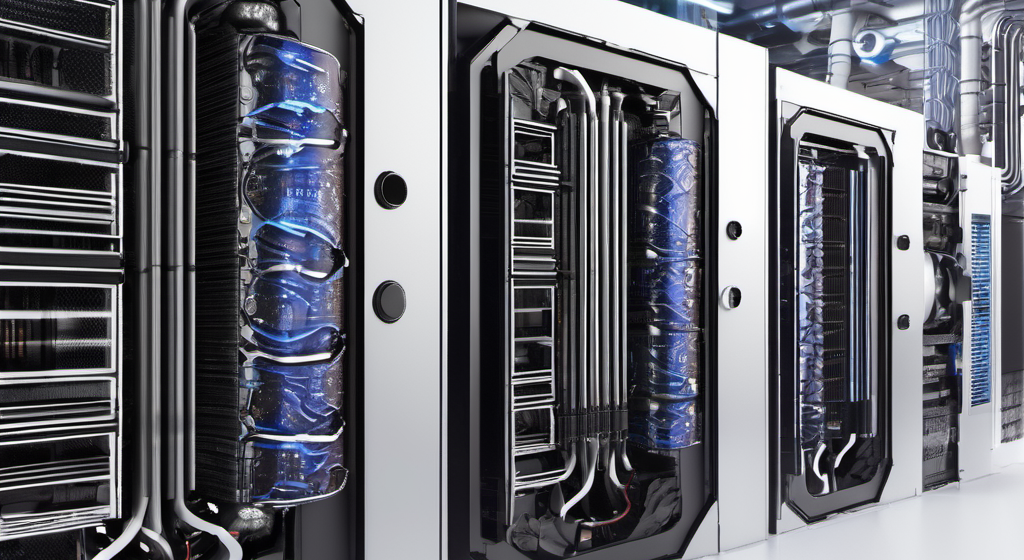In the past 20 years, the internet has exploded, becoming an integral part of our daily lives. From streaming movies to online shopping, making our online lives bigger than ever. But behind the scenes, data centres – massive buildings filled with racks of servers and tech gear, quietly powering our digital world – have grown even bigger and more complicated.
Data centres have grown larger and more complex, housing a multitude of Information and Communications Technology (ICT) devices, from powerful servers and central processing units (CPUs) to memory units and storage devices. Keeping all this stuff cool is a big job too, with cooling systems components such as chillers and pumps working hard.
But here’s the catch: the environmental impact. As concerns about climate change continue to rise, so does the need for sustainable solutions. Data centres are being heavy consumers of energy, consuming massive amounts of electricity to power and cool their equipment. That’s where smart, energy-efficient data centres cooling system come in.
Did you know that around 40% of a data centre’s energy goes into cooling? That’s a lot! But there’s hope. Enter liquid cooling systems – a promising alternative to traditional air-cooling methods. These systems use liquids, like water or coolants, to absorb and dissipate heat more efficiently, leading to significant energy savings. From immersion and spraying techniques to direct-to-chip cooling methods, there’s a variety of liquid cooling solutions on the market, each with its own benefits and challenges.
The Wasa Zero Emission Data Centre (WSTAR) is a research facility we’re constructing in Vaasa, Finland, the energy capital in Finland. It’s part of the Technobothnia research infrastructure and offers direct and near connections to the energy industry. WSTAR also supports research on data processing and storage. The project aims to revolutionise how data centres operate. Learn more at the Wasa Zero Emission Data Centre WSTAR .
That’s where my research comes in. My research focuses on taking the data centre liquid cooling system to the next level. By integrating cutting-edge technologies like Model Predictive Control (MPC) and deep reinforcement learning (DRL), I’m developing a novel control strategy MPC-DRL that optimises energy usage while minimising environmental impact. Think of it as a smart thermostat for data centres – constantly adjusting settings to maintain optimal performance and efficiency.
But it’s not just about saving energy, we can make data centres greener and more efficient. My research also explores innovative ways to reuse waste heat generated by data centres. By capturing and repurposing this heat for tasks like district heating or greenhouse heating, we can further reduce our carbon footprint and create a more sustainable energy ecosystem.
Moreover, this control strategy isn’t just good for the planet – it’s good for business too. By improving the reliability, latency, and cost-effectiveness of data centre operations, we’re helping businesses maximise their resources and stay competitive in today’s fast-paced digital landscape.
And the best part? I’m not just theorising – I’m putting my research to the test. Through rigorous real-world experimentation in WSTAR data centre, I aim to demonstrate the effectiveness of the proposed control strategy in optimising liquid cooling systems and enhancing overall data centre performance.
So, while the internet keeps growing, let’s make sure we’re keeping our planet green too. With smarter, more energy-efficient data centres, we can build a greener future for generations to come.
Hussain Kahil
Doctoral Researcher
School of Technology and Innovations
University of Vaasa, Finland





Everything digital is not green by nature, but it requires a lot of effort to find right solutions. Centralized data centers offer both challenges and opportunities and it´s up to the researchers and companies in the field to find correct setup. Finland is well positioned to take advantage of additionl heat generated by data centers, but of course it´s better to find energy efficient solutions that won´t generate additional heat in the first place.
Good luck with your research!
This blog post provided me with additional knowledge and an insightful look into the critical role data center cooling systems play in terms of sustainability. I learned about the significant potential of liquid cooling systems and advanced control strategies like MPC-DRL to optimize energy usage and reduce environmental impact. The emphasis on practical application through real-world experimentation at the WSTAR data center adds a compelling layer. It highlighted the tangible benefits of this innovative research for the planet and businesses.
I understand that the internet has become increasingly important in our daily lives over the last 20 to 25 years, expanding our online activities such as streaming movies and shopping, but at the same time, data centres that power these activities have grown larger or more complex; this is because these centres use such a large amount of data, and the equipment requires a certain amount of energy to cool. Is it conceivable that the data centre’s data energy will grow by more than 50% quickly? Are there any major drawbacks to employing liquid cooling systems? How quickly can industry install new cooling systems, and what is the expense of long-term maintenance?
It would be interesting to see how this situation will transform.
Your research is very important, as energy saving is crucial in saving the planet for a greener future. It was quite surprising to know that 40 % of data center’s energy goes into cooling! Hopefully this new invention will also turn to be cost-effective enough, so companies are willing to invest in it.